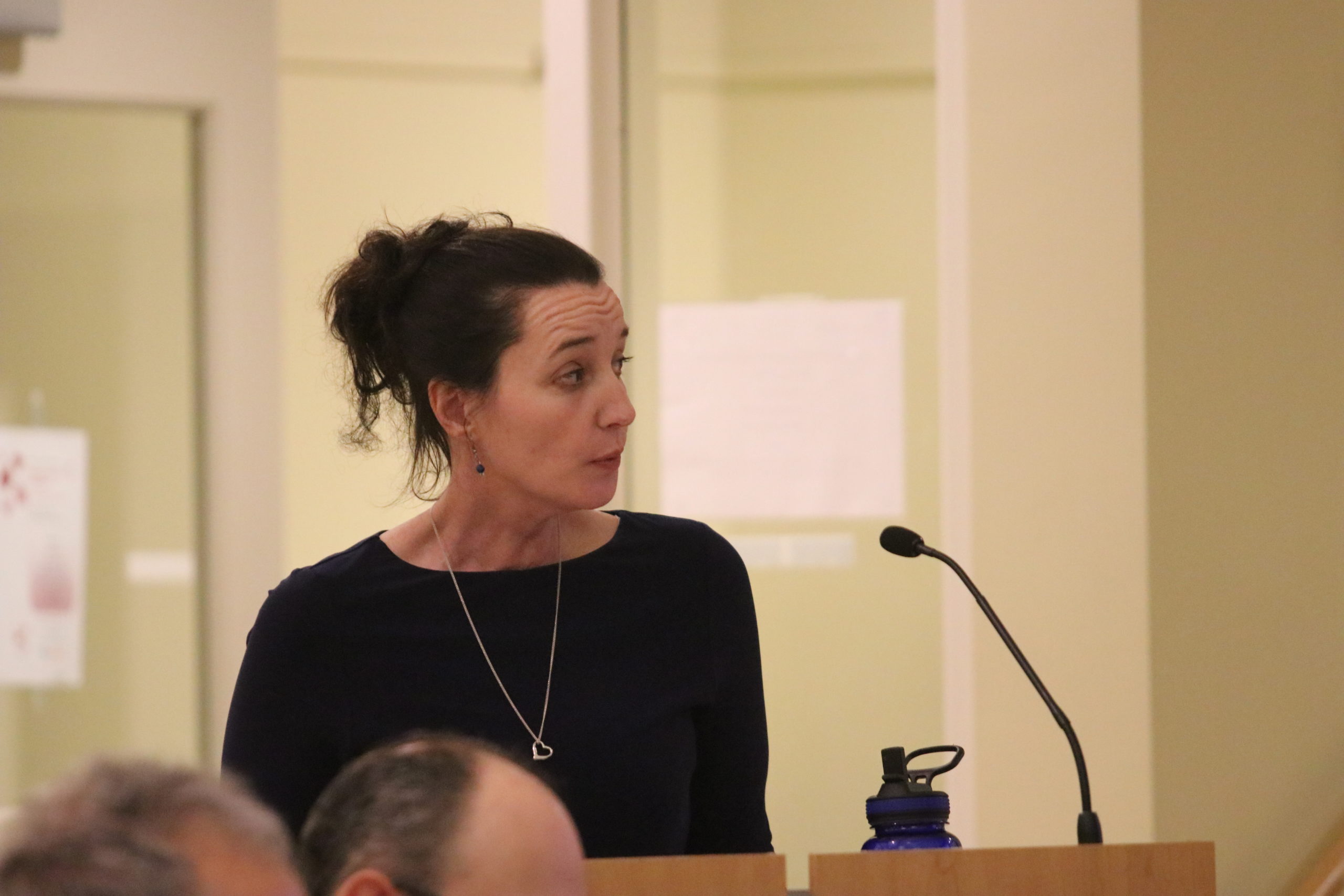Photo: Town Administrator Patrice Garvin at the town budget joint meeting.
Like Bullwinkle J Moose pulling a rabbit out of a hat, the town of Belmont rolled up its sleeves, dug deep into the financial hat and pulled out the latest draft of the fiscal year 2021 budget.
But the document revealed at a joint meeting on Monday, Feb. 10 at the Beech Street Center was missing something that had be anticipated for the past six months; an operating override to balance a revenue shortfall in the $6 million range.
For this coming fiscal year budget, the town will instead use one-time revenue sources and a trimming of expenditures around the edges of town departments to reach its fiscal goal.
“We’re really trying to think outside the box on how to balance the ’21 budget,” said Patrice Garvin, Belmont Town Administrator who led the budget effort with help from the newly created Financial Task Force II.
The highlights of the draft FY ’21 budget include:
- The total operating budget is $137 million – $136,581,778 to be precise – a 6.4 percent increase, up $8.3 million, from fiscal ’20.
- The school budget will increase by $1.9 million to $62.5 million, a 3.1 percent increase.
- The town side of the budget will increase by 0.3 percent, a $117,000 jump.
- The largest increase is in fixed costs, up $6.6 million to $30.8 million, a 27 percent increase largely due to the new debt associated with the construction of the Middle and High School.
Garvin said the continued skyrocketing school enrollment is overshadowing the budget and grabbing a large portion of new revenue as Belmont will have 4,700 student by this coming October, an increase of 300 students in four years.
“It seems to be driving everything in this budget,” she told a joint meeting of of the Select Board, School Committee and the Warrant Committee with members of the Capital Budget committee in attendance.
When the budget was being written in the fall of 2019, there was a realization that revenues would not come close to filling a $5.6 million revenue gap created by rising expenses from the Middle and High School project and schools.
With funds from the stabilization fund created in 2015 with $4.5 million raised by a Proposition 2 1/2 override all but depleted, it was assumed the town would call for an override in Nov. 2020 to resolve the shortfall.
In November, 2019, in an update to the Special Town Meet, the newly formed Financial Task Force II made a somewhat bold announcement to commit to a balanced budget without an override.
And on Monday, the curtain was pulled aside to reveal just how the town would pull $5.6 million out of the budget hat:
- The largest component will come from free cash, the town’s reserves, taking $3.5 million. This will draw down the account to $2.4 million in 2021, skirting just above the percentage required by credit agencies to allow Belmont to maintain a coveted AAA bond rating.
- The town-owned electrical utility, Belmont Light, will provide a $1 million PILOT payment (payment in lieu of taxes), substantially more than the $625,000 it annually provides the town. That payment will be returned back to the utility over time as the utility’s PILOT payment going forward will be lowered to $500,000.
- The final component is $1.2 million from indirect costs from Water and Sewer Enterprise accounts. This is being accomplished by following a recommendation from the Edward J. Collins, Jr. Center for Public Management at UMass/Boston on a different way to calculate indirect costs.
She said she was confident that the hit on free cash will be replenished during the summer when the state certifies that amount.
“I’m not nervous about that number,” said Garvin.
In addition, there will be a trimming of expenditures in fiscal 2021:
- Delay in capital purchases such as new police cruisers ($210,000), turn-out gear for the Fire Department ($26,250) and Central Fleet Equipment for the DPW ($47,385).
- The implementation of the Health Plan Design Change which is projected to limit health costs to a four percent increase.
- Freeze cost of living adjustments (COLA) during union negotiations at zero.
When asked why the town would not bite the bullet and use funds from an override to fill the current revenue gap, Garvin said “I believed we could balance it with one time funds that we have on hand and its always preferable to do so without going to the taxpayers with an override.”
While the town will push the funding of an operational override starting in Fiscal Year 2022, residents will cast their vote on a Prop 2 1/2 measure on Nov. 3, the date of the Presidential election. Garvin said the town is currently in discussion with town departments and the schools to calculate an estimate for the amount the town will ask voters to pass.
Garvin said that funding number will be announced just before the annual Town Meeting.








Legailze it already! tax revenue can only help this place